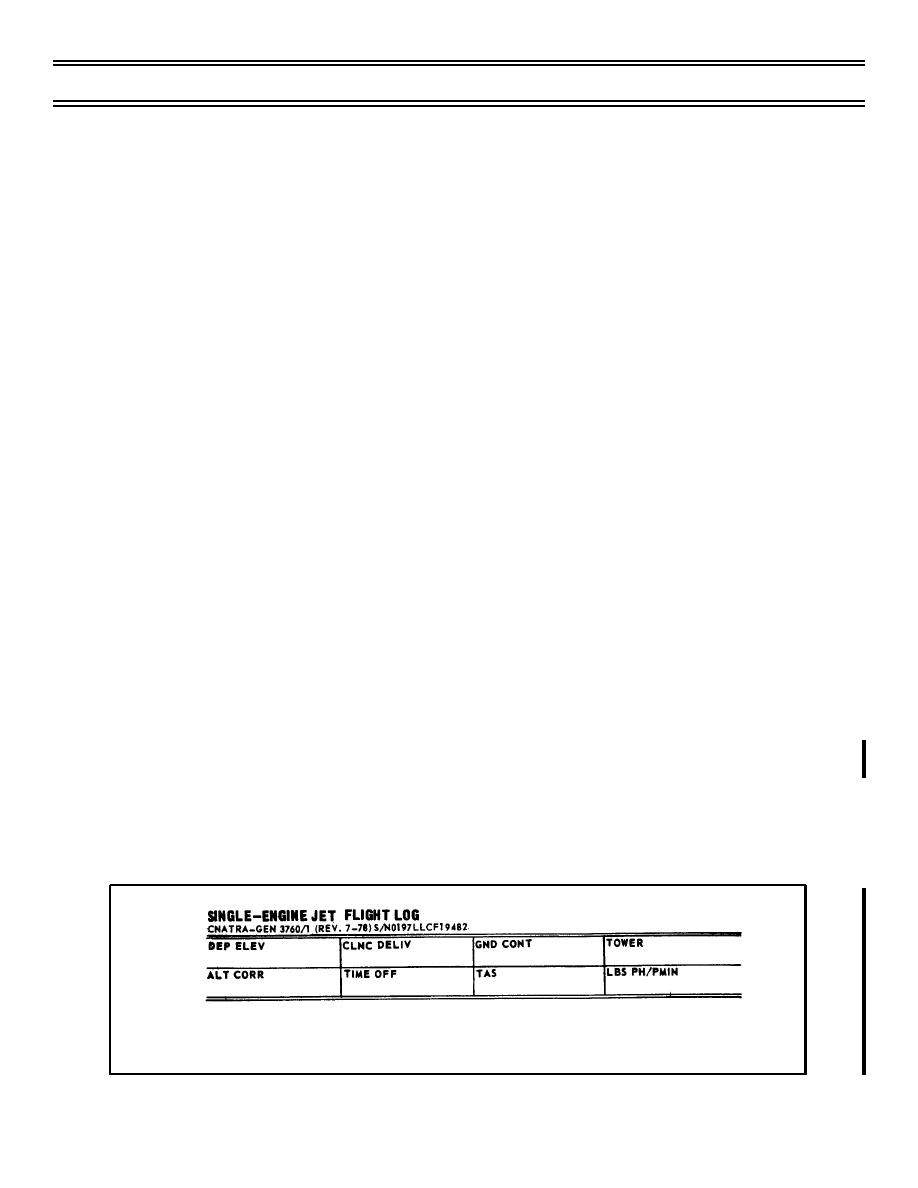
T-45A UJPT, E2-C2 INav-09
FlightPlanning(Departure)
Complete DEP ELEV Block
At the top of the flight log, fill in the spaces for the departure field's elevation in mean sea level (MSL). You
can find the elevation in the FLIP Enroute IFR Supplement or the FLIP Terminal High Altitude Approach
Procedures. Due to the possible differences between field elevation in the ramp area and on the takeoff
runway (sometimes in excess of 75 ft), this difference should be noted, if significant.
Complete CLNC DELIV, GND CONT, and TOWER Blocks
Enter the appropriate frequencies in each block as found in the FLIP Enroute IFR Supplement. If it is
available, find the Automatic Terminal Information Service (ATIS) and METRO frequencies in the IFR
Supplement. Note any differences in call sign used to call tower, ground, etc.
Complete ALT CORR Block
In this block, enter the altimeter correction (which is not commonly used in the Training Command for flight
into Class A airspace where 29.92 is used). To arrive at this information, dial in the current altimeter
setting and compare the MSL reading with the posted elevation on the airfield. An altimeter discrepancy
exceeding 75 ft is unacceptable for an IFR flight.
Complete TIME OFF Block
Complete this block by entering the time (GMT) at takeoff; you will use this time to compute the approach
time (ETA) at destination in the event that you experience communication failure.
Complete TAS Block
Enter your planned enroute true airspeed after level off.
Complete LBS PH/PMIN Block
Extract the fuel flow at cruise altitude/flight level from the TRAWING TWO In-flight Guide based on the
NATOPS performance charts, using the entry values of true airspeed (TAS) and altitude (ALT) for 35,000
feet (used in this example), and fill in the block.
The following example (Figure 5) illustrates types of entries found in the top section of the jet log.
ATIS and METRO frequencies: Just under the LBS PH block, enter the ATIS and METRO frequencies.
KDYS
124.1/346.0
352.4
328.4
50'
997/16.6
380
ATIS: 276.2 METRO: 344.6
Figure 5: TOP SECTION
Page 9-17
(6-99) Change 1



 Previous Page
Previous Page
